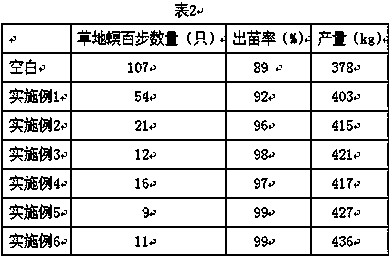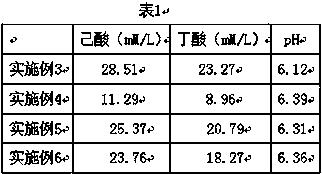Straw returning method
A technology for straws and plant straws, applied in the field of straw returning to the field, can solve the problems of returning straws to the field, decreasing the fertility of the land, affecting the degradation cycle, etc., so as to inhibit the generation of miscellaneous bacteria, prevent the occurrence of diseases, and prevent plant diseases. Effect
- Summary
- Abstract
- Description
- Claims
- Application Information
AI Technical Summary
Problems solved by technology
Method used
Image
Examples
Embodiment 1
[0034] A method for returning straws to the field comprises crushing plant straws and returning them to farmland, and turning the crushed plant straws into the ground to a depth of 30 cm.
Embodiment 2
[0036] A method of returning straw to the field, crushing the plant straw and returning it to the farmland, turning the crushed plant straw into the ground to a depth of 30cm, and watering the farmland with a water consumption of 55m 2 / mu.
Embodiment 3
[0038] A method of returning straw to the field, crushing the plant straw and returning it to the farmland, turning the crushed plant straw and acid-producing bacteria into the ground at a depth of 30 cm, and watering the farmland. Water consumption is 55m 2 / mu. The acid producing bacterium is a composition of Clostridium butyricum and Clostridium coeriformis according to the mass ratio of 1:1; both Clostridium butyricum and Clostridium coercii are purchased from the China Industrial Microorganism Culture Collection Management Center, and the preservation numbers are respectively CICC 20763 and CICC 20021.
[0039] Acidogenic bacteria are carried out according to the following steps: the original bacteria of acidogenic bacteria are inoculated to the Fe containing 5mmol / L 2+ Acid-producing bacteria were obtained through dark fermentation culture in the culture medium.
[0040] The culture medium is 2 g of tryptone, 1 g of beef extract, 0.6 g of yeast extract, 0.4 g of corn ...
PUM
| Property | Measurement | Unit |
|---|---|---|
| Length | aaaaa | aaaaa |
Abstract
Description
Claims
Application Information
 Login to View More
Login to View More - R&D
- Intellectual Property
- Life Sciences
- Materials
- Tech Scout
- Unparalleled Data Quality
- Higher Quality Content
- 60% Fewer Hallucinations
Browse by: Latest US Patents, China's latest patents, Technical Efficacy Thesaurus, Application Domain, Technology Topic, Popular Technical Reports.
© 2025 PatSnap. All rights reserved.Legal|Privacy policy|Modern Slavery Act Transparency Statement|Sitemap|About US| Contact US: help@patsnap.com


